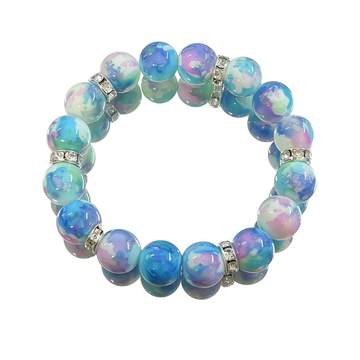The Opulent Craftsmanship and Design of Court-Inspired Stone Bracelets
Court-inspired stone bracelets have long been symbols of elegance and refinement, drawing inspiration from the grandeur of historical royal aesthetics. These pieces are not merely accessories but wearable art that embodies centuries of cultural heritage and artistic mastery. Their allure lies in the meticulous attention to detail, the use of rare materials, and the fusion of traditional techniques with innovative design concepts.
Intricate Metalwork: The Foundation of Royal Splendor
At the heart of every court-style bracelet lies its metal framework, often crafted from precious metals like gold or silver. Artisans employ age-old methods such as filigree, chasing, and engrving to create delicate patterns that mimic the ornate motifs found in palace architecture. For instance, scrolling vines, floral motifs, and geometric lattice designs are commonly used to evoke a sense of regality. The metal is often oxidized or polished to achieve a contrasting finish, enhancing the visual depth of the piece. Some designs incorporate openwork, allowing light to pass through and create a dynamic interplay of shadows and highlights.
Gemstone Selection and Setting: A Symphony of Color and Light
The choice of gemstones plays a pivotal role in defining the bracelet’s character. Historically, rubies, emeralds, sapphires, and pearls were favored by royalty for their rarity and symbolic significance. Modern interpretations may also include semi-precious stones like jade, lapis lazuli, or turquoise, each chosen for its unique hue and cultural associations. The setting technique is equally important; bezels, prongs, or pave settings are used to secure the stones while maximizing their brilliance. In some designs, stones are carved into intricate shapes, such as cabochons or cameos, to add texture and dimension. The arrangement of stones often follows a symmetrical or radial pattern, reflecting the harmony and balance prized in courtly art.
Embellishments and Enamel Work: Adding Layers of Luxury
To elevate the bracelet’s opulence, artisans incorporate additional embellishments such as enamel, micro-mosaics, or even tiny seed pearls. Enameling, a technique dating back to ancient civilizations, involves fusing powdered glass onto the metal surface at high temperatures, resulting in vibrant, durable colors. This method allows for detailed miniature paintings or abstract designs that complement the gemstones. Micro-mosaics, made from tiny tesserae of glass or stone, create intricate scenes or patterns, while seed pearls are meticulously stitched onto the metal to form delicate borders or floral accents. These embellishments not only enhance the visual appeal but also showcase the artisan’s skill in combining diverse materials into a cohesive whole.
Cultural Symbolism and Modern Adaptations
While rooted in tradition, court-inspired stone bracelets continue to evolve, blending historical motifs with contemporary sensibilities. Designers may reinterpret classical elements, such as replacing traditional motifs with abstract geometric forms or incorporating unconventional materials like resin or acrylic for a modern twist. Despite these innovations, the core principles of balance, proportion, and craftsmanship remain unchanged. Each piece serves as a testament to the enduring legacy of royal aesthetics, bridging the gap between past and present through its timeless beauty.
By honoring the techniques and symbols of bygone eras while embracing modern creativity, court-inspired stone bracelets retain their status as coveted treasures. Their ability to capture the imagination and evoke a sense of grandeur ensures their relevance in an ever-changing fashion landscape.







